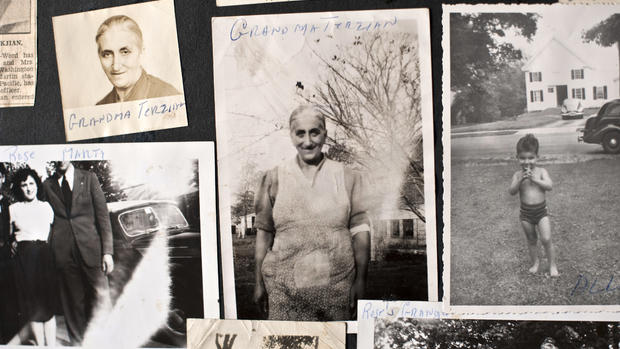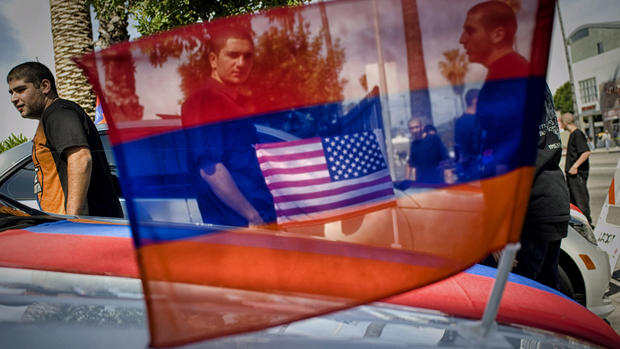100 years later: Photographer tracks the Armenian diaspora
Friday marks 100 years since the killing of an estimated 1.5 million Armenians by the Ottoman government between 1915 and 1923, with nearly 1.2 million killed in the first year.
This month, Pope Francis became the first head of the Roman Catholic Church to publicly call that killing a "genocide." He joins ranks of international genocide scholars who have used the term for the massacre. However, the Turkish government still refuses to recognize it as genocide and the U.S. has stopped short of labeling it as such, though President Obama pledged to do so in a statement just before he took office.
For photographer and Armenian-American Scout Tufankjian, the genocide has played a role in her life since childhood. Like other Armenians, she seeks an acknowledgment of that brutal truth, but she doesn't want her cultural heritage to be defined by it.
Tufankjian's name may not be familiar, but her 2012 photo of the president and first lady on the campaign trail might be. The campaign used the photo, taken after a rally in Iowa, in their official victory tweet. It quickly became Twitter's most retweeted photo and Facebook's most-liked photo in history at that time.
A Massachusetts native, she became curious about her family roots after spending afternoons at her grandparents' house flipping through their Armenian magazines.
"I remember a map showing the various locations of Armenian clubs around the world. I used to stare at it all the time and wonder about my fellow Armenians in Addis Ababa and Aleppo," Tufankjian said in an e-mail.
For the last six years, the 37-year-old has tried to satisfy her childhood curiosity by photographing Armenian lives around the world. The genocide displaced nearly three-fifths of the Armenian population and now, about 8 million Armenians living throughout the globe define the Armenian diaspora.
To capture just a snapshot, Tufankjian traveled to more than 20 countries and conducted over 300 interviews. Her travels culminated in a photography book "There Is Only theEarth: Images from the Armenian Diaspora Project," which will come out next Tuesday.
As a child, the only books Tufankjian remembers about Armenians focused on the genocide, as if that had ended the Armenian story.
"The biggest misconception is that Armenians only see their Armenian-ness through the lens of the genocide," she said, describing her book as a narrative about survival rather than victimhood.
The survival she captures ranges from the religious to the romantic to the familial. In one, a young Brazilian girl looks back beneath her white lace veil as she prepares to take communion at the Catedral Apostolica Armenia Sao Jorge. In Moscow, a smiling couple walks briskly hand-in-hand through a metro station. In another, there are hands of a mother and daughter working side by side making traditional dolma (stuffed grape leaves) for a family wedding in France.
Her collection tries to bridge not only geographic divides, but also the past and the present. "The genocide was really not that long ago. We are talking about people's parents and grandparents who were murdered or deported. To deny their losses is to pour salt on their wounds."
The book features a number of Tufankjian's own faded family photographs. In the center of a collage of black-and-whites, her great grandmother stands shyly with her hands at her side. She fled the earlier massacres in 1898. In a photo to the right, the little boy in the bathing suit grinning is Tufankjian's father, Allan.
This week, Tufankjian traveled to Istanbul as part of a mass gathering of Armenian-Americans, an effort organized by the U.S.-based nonprofit "Project 2015." Tufankjian's photographs over the last four days are a testament to an Armenian identity, whatever form it takes, that has been handed down from generation to generation.
On Wednesday night, thousands gathered for a concert that bridged the generations - the songs performed were the same traditionally sung by women to honor the 250 Armenian intellectuals who were rounded up and murdered on the first night of the genocide.
"These [events] are not an ending. The efforts will not stop on April 25. Nor will similar efforts around the world," Tufankjian said. "It's impossible to imagine that they would. It's about keeping the momentum going and channeling all of the energy towards future endeavors."





